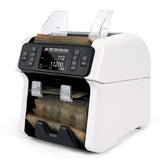Can Old Banknotes Still Be Used After New Ones Are Issued?
When a country introduces new banknotes, as Argentina did with its 10,000 peso note on May 7, 2024, a common question arises: what happens to the old notes? Will they become worthless overnight, or can they still be used? The answer lies in a mix of policy, economics, and practicality. New banknotes often signal advancements in security or responses to economic pressures, but their arrival doesn’t typically render old notes obsolete immediately. Understanding how this transition works can help consumers and businesses navigate the change smoothly.
The Legal Status of Old Banknotes
Old banknotes generally remain legal tender unless a central bank explicitly declares otherwise. Legal tender means the notes are valid for settling debts and transactions within the issuing country. When new notes are introduced, central banks usually allow both versions to circulate side by side for a transition period, which can last months or even years. For example, Japan’s new yen notes, launched on July 3, 2024, coexist with older versions, which remain valid indefinitely. This gradual approach ensures stability, giving businesses and consumers time to adapt.
However, some situations lead to old notes losing their status. In rare cases, like India’s 2016 demonetization, the government swiftly invalidated high-denomination notes to curb black-market activity, requiring rapid exchange. Such aggressive policies are exceptions, often tied to specific economic or political goals. More commonly, old notes can be exchanged at banks even after they cease to be legal tender, as seen in the Eurozone, where older euro notes remain redeemable at central banks long after new versions appear.
Practical Use of Old Banknotes
In everyday life, the usability of old banknotes depends on more than just their legal status. Merchants typically accept them during the transition period, but as new notes become widespread, some may hesitate, especially if they’re unfamiliar with older designs or suspect counterfeits. In Argentina, where hyperinflation has eroded the value of lower-denomination notes like the 1,000 and 2,000 peso, the new 10,000 peso note is gaining traction, but older notes are still accepted, particularly in urban areas with robust banking access.
Banks play a crucial role, readily accepting old notes for deposits or exchanging them for new ones. ATMs, however, may shift to dispensing new notes as systems are updated, which can limit the circulation of older ones. Public perception also matters. In regions where new notes are heavily promoted, consumers may prefer them, viewing old notes as less reliable, even if they’re still valid. Central banks often counter this through campaigns, as Argentina’s central bank has done, reassuring the public that older peso notes remain usable.
Real-World Examples
Argentina’s 10,000 peso note, introduced amid 287.9% annual inflation in 2024, illustrates a common scenario. Driven by the need to simplify transactions—1,000 peso notes are worth less than $1 USD—the new note hasn’t displaced older denominations, which remain legal tender. However, their practical use is waning due to their low purchasing power, a natural consequence of inflation rather than policy. Banks continue to accept these notes, and no deadline for their validity has been announced, ensuring a gradual transition.
Contrast this with Japan, where economic stability allows old yen notes to circulate alongside new ones without a set expiration. The Eurozone’s approach is similar: when new euro series were rolled out between 2013 and 2019, older notes remained valid for years, with central banks offering indefinite exchange. India’s 2016 case stands out as an outlier, where 500 and 1,000 rupee notes were abruptly demonetized, forcing citizens to exchange them within weeks, causing temporary chaos. These examples show how economic context shapes the fate of old notes.
Factors Affecting Old Banknote Usage
Economic conditions heavily influence whether old notes remain practical. In high-inflation environments like Argentina, low-value notes naturally fall out of favor, as seen with 100 and 200 peso notes, which are rarely used today. Stable economies, like Japan’s, support prolonged coexistence of old and new notes. Technology also plays a role. Vending machines, ATMs, and money counters, such as Ribao Technology’s BC-55, often require updates to recognize new notes, which can sidelined older ones in automated systems. Ribao’s machines, for instance, support Argentina’s 10,000 peso note through software upgrades, but older equipment may struggle.
Government policy is another factor. A central bank may encourage new note adoption through incentives or set firm deadlines for old note validity. In Argentina, the central bank’s focus is on introducing even higher denominations, like the 20,000 peso note, suggesting old notes will remain valid for now to avoid disruption. Public awareness and infrastructure, such as banking access, further determine how seamlessly old notes are phased out.
How Consumers and Businesses Can Adapt
For consumers, staying informed is key. Check central bank announcements to confirm the status of old notes and any exchange deadlines. Depositing old notes at banks or exchanging them for new ones prevents potential losses, especially in countries like Argentina, where inflation erodes value quickly. Learning to identify new notes’ security features, like the 10,000 peso’s SPARK Flow® ink, also helps avoid confusion or fraud.
Businesses face a broader challenge. Upgrading equipment, such as Ribao’s BCS-160 sorter, ensures compatibility with new notes, minimizing transaction errors. Training staff to recognize both old and new notes reduces customer friction, while regular bank deposits keep old notes from accumulating. In Argentina, businesses should prioritize higher-denomination notes for efficiency, given the declining utility of older, smaller denominations. Staying in touch with banks ensures smooth handling of old notes, especially as new ones dominate circulation.
Looking Ahead
The introduction of new banknotes rarely spells the immediate end for old ones. Central banks design transitions to balance innovation with stability, allowing old notes to remain valid during a handover period. In Argentina’s case, the 10,000 peso note addresses urgent economic needs, but older notes persist, albeit with reduced practicality. Globally, from Japan’s stable yen to the Eurozone’s phased updates, old notes typically retain value, either in circulation or through bank exchanges.
As digital payments gain ground, the role of physical currency may diminish, but for now, new and old notes coexist to serve diverse economies. Consumers and businesses can thrive in this shift by staying proactive—upgrading systems, banking regularly, and following central bank guidance. Whether in Buenos Aires or Tokyo, preparation ensures that neither new nor old notes disrupt daily life.








